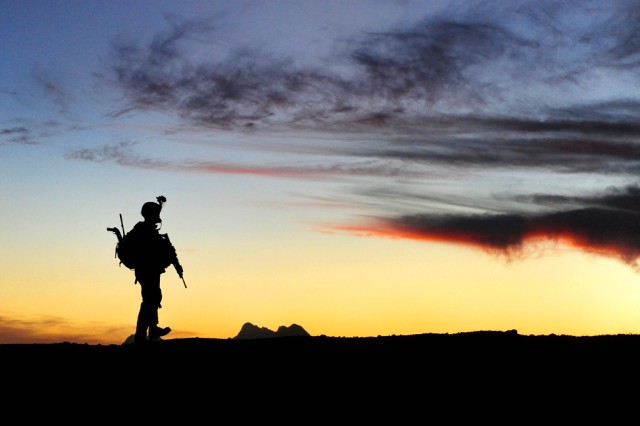WASHINGTON (Army News Service, Dec. 7, 2009) -- In a joint message to senior Army leaders on Dec. 2, Secretary of the Army John McHugh and Chief of Staff Gen. George Casey Jr. stated that the Afghanistan troop increase will not affect plans underway to restore balance.
All general officers, senior executive service professionals, colonels, brigade and battalion commanders, command sergeant majors, and sergeant majors received the following message:
We hope you saw the President's speech last night. If you didn't, a copy is attached. It lays out our way ahead in Afghanistan. He announced that we will send 30,000 troops to Afghanistan for the next 18 months to set the conditions for the U.S. to transfer security responsibilities to the Afghans.
We want you to help us do two things in the coming months to ensure we implement our part of this decision and sustain the force for the long haul.
First, we must do everything we can to prepare the forces and the theater to receive these forces as quickly as we can so that we maximize the impact they can make on the ground.
Second, we want you to get out and talk to your Soldiers, Civilians and Families to ensure they understand how this will affect them. It will not be as significant as they may fear.
The senior leaders enclosed a separate attachment that stressed that the Army fully supports the president's decision and understands that it will give Soldiers the best opportunity to prevail in their mission. It also expanded on what to communicate to Soldiers, Department of the Army civilians, and Army families. In the body of their message, they highlighted the following key points:
- It will be a few more days before beginning notification of specific units as we finalize the troop list.
- Because of the growth of the Army over the past five years (+70,000 troops since 2004 with 40,000 of them in the last 2 years) and the drawdown in Iraq, we are able to execute this increase without:
- Going to 15-month deployments
- Going to less than 12 months at home between deployments
- Halting our plan to come off stop loss
- Assuming the drawdown in Iraq continues about on schedule, we will also continue to make progress toward our BOG:dwell* goals for FY11 - 1:2 Active Component and 1:4 Reserve Component. Even with the increase ordered by the President we estimate that about 70 percent of the active component and about 80 percent of the reserve component will achieve the BOG:dwell goals we set for 2011. The remainder of the force will continue to see their dwell rate increase and should meet these goals by 2012.
The message concluded as follows:
We share your concerns for our Army families. We know our Soldiers, Families, Army Civilians and Veterans have carried an enormous burden in this war, and we are committed to providing a level of care and support that is commensurate with their service and sacrifice.
Our Army has never failed to answer the Nation's call. As we have done over the last eight years, we will rise to this challenge. We will do our part to disrupt, dismantle, and defeat al-Qaeda and prevent their return to either Afghanistan or Pakistan, while reversing the momentum of the Taliban insurgency in Afghanistan and successfully complete our mission in Iraq. The American people expect nothing less.
-- SEC McHugh and GEN Casey
* EditorAca,!a,,cs note: BOG:dwell refers to the ratio between Aca,!A"boots on groundAca,!A? deployment time and Aca,!A"dwellAca,!A? or length of time at home station between deployments.


Social Sharing